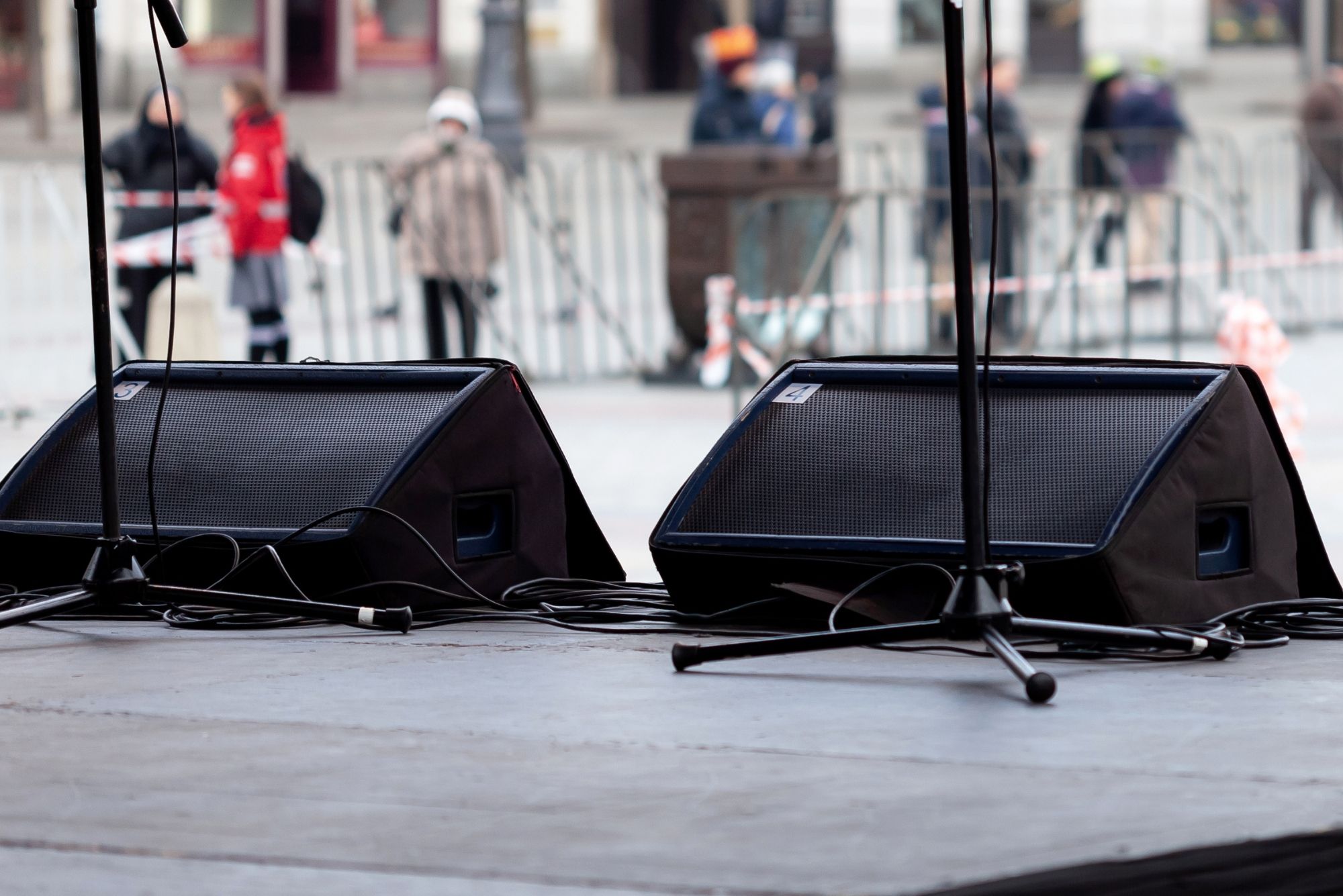Does Anyone Use Floor Wedge Monitors Anymore?
Published on: Tuesday, May 31, 2022 - 7:00am

Do you remember the boom box? Still have your Walkman? Not many people do.
Just like the personal audio devices of yesteryear, stage audio technology and design are constantly improving.
Floor wedge monitors have been a staple of audio systems for decades, but does anyone really use them anymore? Are you ashamed to tell people you still use wedges? Is it time to retire the floor wedge?
Where Have all the Floor Wedges Gone?
While large segments of audio system technology have advanced by leaps and bounds, the progression of floor wedges is not quite as dramatic. These days, wedges come in a wider range of options. There are lower profile/more compact types, and audio fidelity has benefited from improvements to drivers, audio processing, and amplifier technology.
That said, floor wedges still do exactly the job they’re meant to do. So why don’t we see them as often anymore?
Stage Design
If you’re looking for it, you’ve probably noticed a wide range of churches are using in-ear monitors instead of floor wedges. One reason for this is that stage design priorities have changed.
As more and more churches prioritized broadcasting on TV and/or streaming services to the web over the past 30 years, stage design has trended toward a cleaner look.
One easy way to contribute to a cleaner stage is to get rid of clunky floor wedges and replace them with in-ear monitors for musicians and speakers.
A cleaner stage, of course, means that when you change your stage plot, you have less to move. Floor wedges are just additional objects that have to be managed or picked up and moved on a weekly or monthly basis. This can create unnecessary headaches, especially for a small staff.
Sound Quality
Many churches still have a less-than-perfect acoustic environment. The combination of floor wedges, stage volume, and poor acoustics creates a blend of competing energies that lead to a challenging mix environment, with compromised control and intelligibility.
When you replace floor wedges with in-ear monitors, you limit the stage volume and make it easier to create a better mix in an acoustically challenging room.
In-Ear Monitors
While it’s not new technology, and not everyone is a believer, in-ear monitor technology (wired or wireless) has been replacing floor wedges for over 35 years.
Overall, in-ear monitors offer some major benefits over floor wedges.
In-ear monitors can save musicians’ ears from excessively loud floor wedges that have to compete with all the other sound in the room, also making the mix engineer’s job easier.
In addition, in-ear monitors mean a cleaner stage design with no bulky floor wedges in the audience or camera’s sightline.
Lastly, in-ear monitors provide more freedom and a dedicated monitor mix for musicians and speakers. The people on stage no longer have to share a floor wedge amongst each other, and they can move around the stage without losing their monitor sound.

When Do Floor Wedges Still Make Sense?
Despite the benefits of in-ears, some people still prefer floor wedges — and for valid reasons. Some performers, speakers, or pastors don’t like having ear buds in their ears. They find it distracting or uncomfortable, so they prefer a floor wedge instead.
If you end up with more than one personal preference on a stage, you can of course blend technologies. Maybe the speaking pastor doesn’t like in-ear monitors, but the worship pastor loves them. You can have a couple of wedges on stage for the speaker so he’s comfortable when he teaches, and then use the in-ears for the worship team.
They’re not mutually exclusive, so you can mix and match your options. It isn’t about what’s the best; it’s about whatever is most appropriate for your situation.
Choose What’s Right…Don’t Be Scared
Even though floor wedges have become more and more sparse over the years, they still hold value and should be used where it makes sense.
Whether to use floor wedges or in-ears should be a choice related to your church’s specific situation and factors such as acoustic environment, stage volume, and technician experience, to name a few.
Make the decision that’s right for you, and don’t apologize for it.



